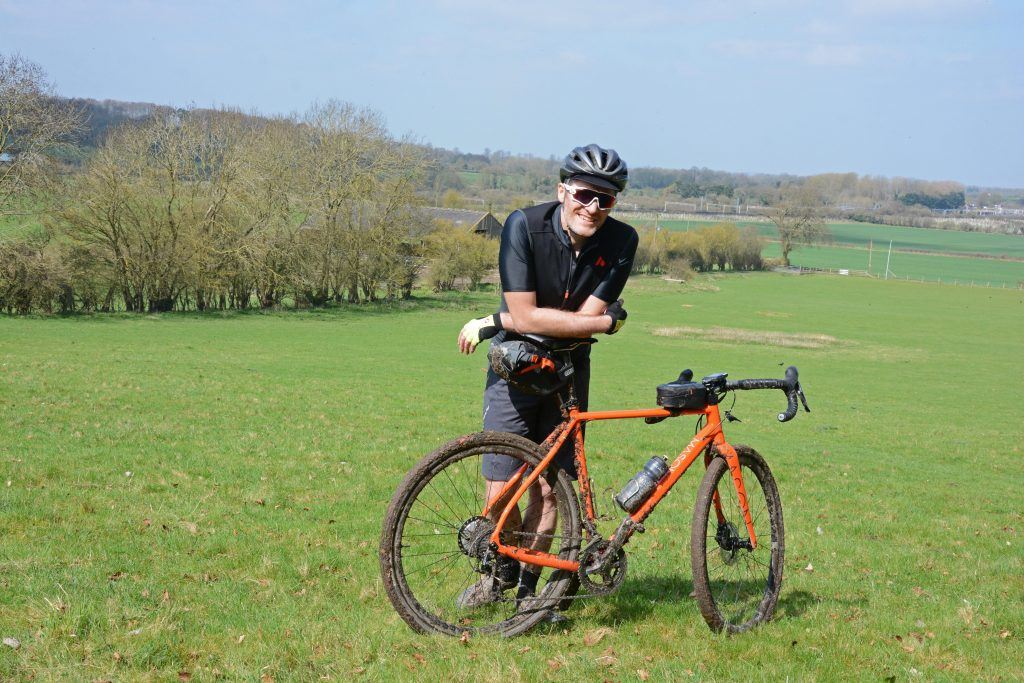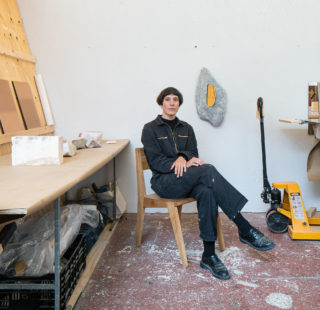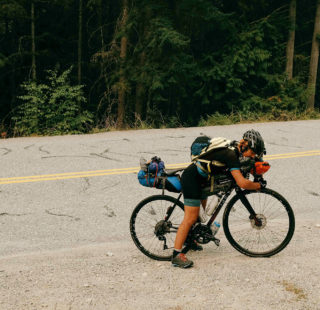Patrick Kinsella pops his gravel biking cherry by joining ADVNTR founders, James Deane and Nigel Leech. The ‘lads of gravel’ give Paddy a taste of what gravel cycling is all about.
A certain somewhat unfamiliar circle of light burns brightly in the sky above the Chiltern Hills on the bluebird morning I meet with adventure cycling sages James and Nigel from ADVNTR. Today, I will lose my gravel-bike innocence, and even the prodigal sun has returned from wherever the hell it’s been partying for the previous 6 months or so, to see what happens.
Sadly, the solar power has been switched on a little late to dry out the early part of our planned route, which sees us battle across Berkhamsted Common bridleways bestrewn with big puddles and tyre-munching sludgy mud.
No matter. The point of today – besides simply enjoying a ride on the wild side, through the rural idyll of Hertfordshire – is to give these here gravel bikes a spin on a range of tracks, trails and lanes. And spin I do – sometimes on the spot – especially during a couple of the early ascents on the loose stuff, as I learn how to properly position my weight on the unfamiliar frame to enable my Clement X’Plor USH tyres to get to grips with the terra less-firma.

Blue skies above, slippy trails below.
The four of us are riding very different steeds, with one common denominator: they’re all drop-bar bikes, designed and built to be multi-terrain adventure machines, ready for any escapade you want to throw yourself at, no matter how gritty, gravelly or bloody muddy conditions might be.
I’m on a Genesis Croix De Fer, a tried-and-tested steel-framed model made with mud, guts and gravel riding in mind, but almost equally at home on tarmac. James is piloting a Mason Bokeh, a sleek and adventure-seeking hand-built Italian stunner with a price tag to match its boutique construction, while Nigel is taking a more egalitarian – but nonetheless nubile or nimble – Fearless Vulture for its maiden voyage. Andrew has a classic Trek Crockett (loaned for the ride by Corley Cycles) a bike that could arguably roll with either the cyclo-cross camp or the gravel gang, depending on how you rock it.
…GRAVEL BIKES ARE ROBUST, LESS TWITCHY ON TECHNICAL TRAILS, CLEARANCE FOR CHUNKIER TYRES…IDEAL FOR LONG SESSIONS IN THE SADDLE.
And arguably is the operative word, with the finer points of difference between gravel and crossbikes being a common cause of bust-ups between riders on forums and over espressos. In a nutshell, finely tuned crossbikes are specced for speed and agility, and are ideal for racing, offering less comfort and a more aggressive frame design, with absolutely no bells and whistles (or even bottle mounts in some cases). A true gravel bike is more robust, less twitchy on technical trails, has greater clearance for chunkier tyres and generally boasts a more laid-back geometry, ideal for longer sessions in the saddle.
As James concisely puts it: “A crossbike is great for 90 minutes of tearing your lungs out around a playing field in November, but it wouldn’t be my first choice for 120 miles in Northumberland.”
But the debate rolls on over endless miles of crushed minutiae, and it has taken time for some within the cycling world to get their heads around the truly liberating and versatile potential of gravel bikes – as my current riding buddies appreciate more than most.

James from ADVNTR opted to use this Mason Bokeh fitted with 700cx 43 tyres
He’s been an enthusiastic apostle of the new genre since its outset, and as we mercifully leave the quagmire behind and hit some drier trails, James explains how the off-road cycling community got up to speed on gravel long before certain sections of the bike industry itself.
“When we launched ADVNTR, I chatted to a few bike shops, and for many the idea sounded ludicrous,” he recalls. “Gravel bikes to them were a folly that would pass, and they didn’t want stock sitting around gathering dust.
“Now these same stores are now playing catch-up, with customers demanding bikes that can roll on the road with relative ease, taking them to work in the week, while being capable of tackling technical trails at the weekend. Riders can even score brownie points from the Significant Other when their bike collection starts to shrink rather than expand.”
I’ll take that last comment with a pinch of salt – the shrinking-bike-collection is a mythical monster in my book, and it can stay so, despite the tales I might tell at home – but one fact remains: many cycling equipment distributors in the UK are finding the gravel market is now their biggest seller.
“The potential is huge,” James enthuses with the gleeful grin of a man who spotted a winner when it was a newly weaned foal. “Our roads are getting ever rougher, punctuated by potholes, and they’re not a pleasant place to be on skinny tyres. Most of the pedalling population live a long way from real mountains, and bikes with 140mm of travel are total overkill for southern England. We’ve had great fun baiting mountain bikers on their trails!”
Nigel – who has some serious cycling form, including a successful completion of the Tour Divide, a 2,745-mile (4,418km) off-road epic across the US that traces the Rocky Mountains from Canada to the Mexico border – is the epitome of an MTB misfit who has ended up doing much more time behind the bars of a gravel bike.

Descending on a gravel bike can hone your skills on the trail.
“On the Suffolk Coast, where I live, decent tracks exist but they’re few and far between,” he says. “I found myself either driving two hours each way to do an hour-and-a-half of mountain biking, or going out on the road bike, looking at the same old stretch of tarmac and dealing with the same bad drivers.
“Then I got hold of a gravel bike, and I was able to ride straight out of my house and link up a load of trails for an extended adventure, while not chugging along the lanes and roads at a snail’s pace, pedalling a heavy framed bike with chunky tyres. Perfect.”
With extra time spent in the saddle during longer routes, the clothing gravel riders prefer has its own subtle specifications too – more robust, comfortable and protective, and less race-cut than cyclocross clobber, with storage pockets for snacks and food, but not quite as baggy as traditional mountain-biking gear. I certainly appreciate the sustenance I’ve shoved in the pockets of my gilet, having burned some extra calories during the muddy start to our ride.
While I wouldn’t describe the terrain we’re riding as ‘gravel’, the flinty and hard-crushed limestone trails and country lanes of the Chilterns do give us a chance to test the claim that these bikes are the Swiss Army Knife of the cycling world.
I’m finding it hard to argue. The looping route is a mere 50km – many gritty graveleteers would do twice that distance before breakfast – but besides some serious mud, it offers an eclectic selection of singletrack trails, challenging ascents, grassy bridleways and sealed road, all of which the bikes handle with aplomb.
Unsurprisingly, the technical sections are the most interesting and exhilarating, with one particular highlight being a rip-roaring descent through a tunnel of trees and along a deep, rutted trough of a trail that resembles an earthy bobsleigh run.

Slip sliding away… The guys from ADVNTR admit that this isn’t actually gravel
With zero suspension and rolling on rubber less than half the size of my mountain bike tyres, I’m forced into an altogether new zone – brow knitted into high-concentration mode as I force my hands down onto the dropbars for better grip and carefully pick my lines, but mouth loose and whooping with excitement at the same time. I probably look like a village idiot, but I’m buzzing.
I’VE BEEN GRABBED BY THE GRAVEL BUG…
And within all this is a hidden payload for people who like to mix their machines and riding experiences – the more miles you put in on a gravel bike, the better you’ll be on a mountain bike.
“Riding a rigid bike with narrow tyres and a seat post up in the air makes you much more aware of how much your body position can weight the bike,” James explains. “You learn to read the trail and pick the line of least resistance, to relax your arms and use them as natural suspension, and when you jump back on a mountain bike, you absolutely fly!”
I can see that. The problem is, now I’ve been grabbed by the gravel bug, I’m going to have to sneak a new steed into the home stable, and making that fly past the Significant Other will require a whole new skillset.
Our thanks to:
Pat Kinsella from Adventure Types for joining ADVNTR.
Corley Cycles for the loan of the Trek Crockett.
Tom Walton for the Genesis Croix De Fer.
And, finally, Tim Cokayne founder of Fearless Bikes, for the Vulture.
Last modified: 31st July 2020












